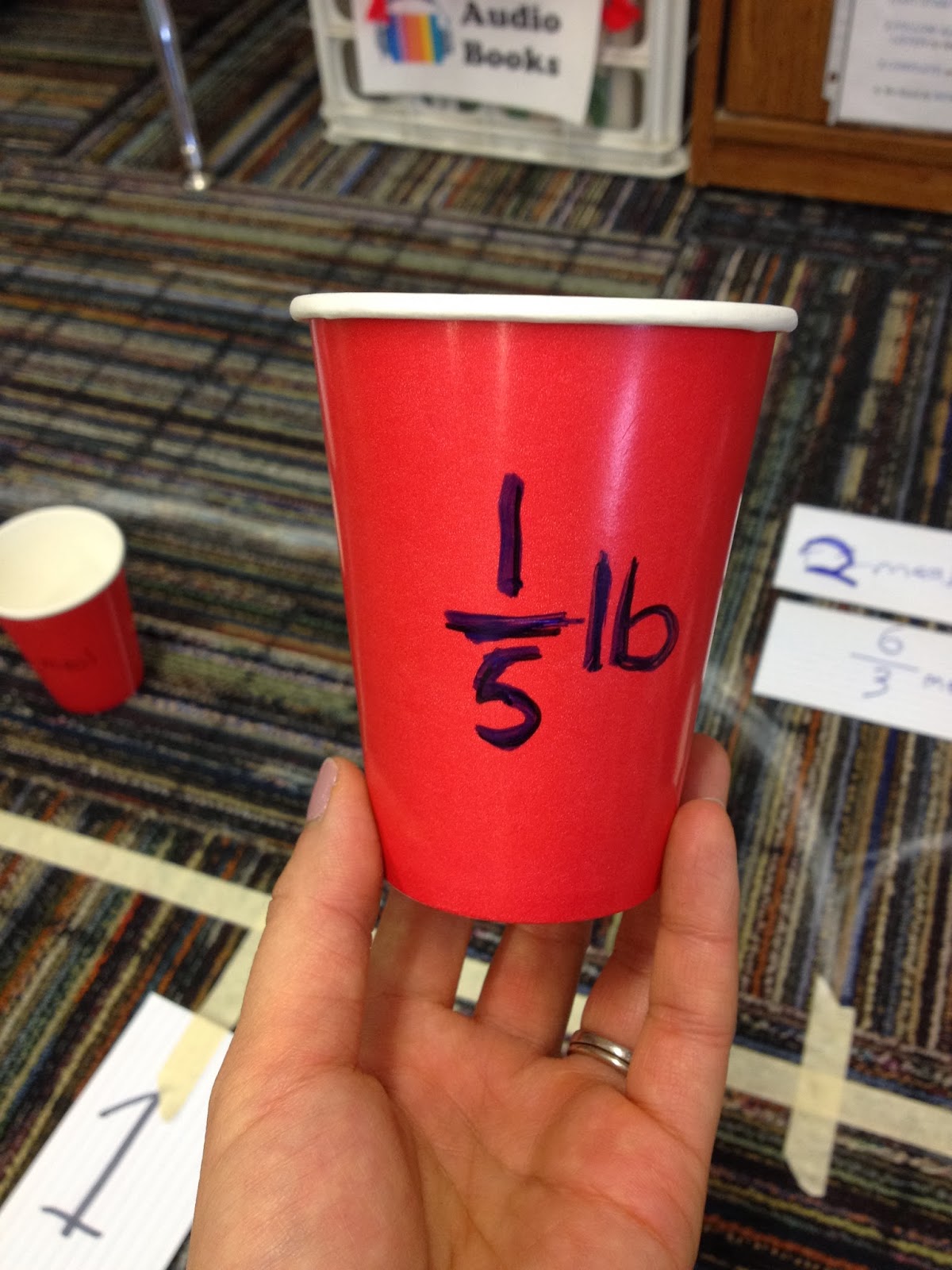I had taken notes and planned how to teach the modeling of division of whole numbers by fractions WITH remainders, and we're finally here. I knew this would be a difficult concept for the reasons I mentioned in this other "Fraction February" post. Therefore, I wanted a way for students to "see" the model in a way other than following my notes under the document camera.
Here's the problem: Mrs. H had 2 pounds of dog food. Her dog eats 3/5 pound per meal. How many meals will she be able to feed her dog with the 2 pounds?
They had already modeled division problems like this where the answer fits in evenly, so they knew the process. We had also talked about the "pattern" they see in the division... essentially, what is the algorithm?
When I gave them this problem, they all did exactly as I expected. They drew a number line and did everything just right, but got stuck at the leftover spot.
 |
| NOT the correct answer. |
Since they have already figured out the "pattern" to the algorithm, we just did it. Yup, we multiplied the inverse of the 2nd number to get 10/3, which was 3 and 1/3. I asked if they could see the whole 3 in their model, which they all could. When I asked where the 1/3 came from, I got silence. I even questioned, "In the original problem of 2 divided by 3/5, fifths is the unit we're working with... so where did we get this 1/3, which is the correct answer?" About two of my highest math kids could tell me, but that was it. I could tell the rest of the room didn't get it based on their explanation, which needed to be refined. So we did this hands on number line whole group. This picture below was the end result.
All the cups had the following written on the front and the back. They could not see the "1/3 meal" label from where they were sitting at first.
When it was time to discuss what each partitioned part meant, I started with 1/5 pounds. I put the cups under the number line so show that each section represented 1/5lb of food. No complaints there.
Then I stood over the first chalked jump that represented the dog eating one full meal. I now asked where is 1/3? There's three 1/5lb cups in each jump. So I then turned the cups around and showed how each cup represents 1/5lb OR 1/3 of a meal. I moved the 1/3 meal cup above the number line, which is where we were modeling the number of meals.
So here's the hard part. The remainder...
2 pounds of food is how much I have. Any cup AFTER 2 pounds was upside down, representing that I did not have that portion.
We labeled that extra portion as 1/5 pound and put in under the number line. We also chalked the jump where we would have had a full meal, even if it went past 2 pounds of food (the reason I wanted to make the number line go to 3 whole pounds). Then, to show that it was also 1/3, I took the cup with "food" in it and put it into a dog bowl with the 2 other upside down cups (our phantom food). I then asked them, "How much of the MEAL did my dog get??? 1 out of 3 cups is equal to 1/3 of his meal.
Whole answer? My dog could eat 3 full meals & 1/3 more of a meal from my 2 pound bag.
We created a double number line with the bottom representing pounds & the top representing meals. PHEW!
Next step? Transfer what we did on the floor into our notes to reiterate what was taught. We will also label the algorithm and ask extension questions as mentioned in this "Fraction February" post in addition to practicing with some more situations where it's not so "nice." :)







How do we make this into a college drinking game?? Just kidding ;)
ReplyDeleteThe possibilities are endless! Especially if they are bad at the math.
Delete